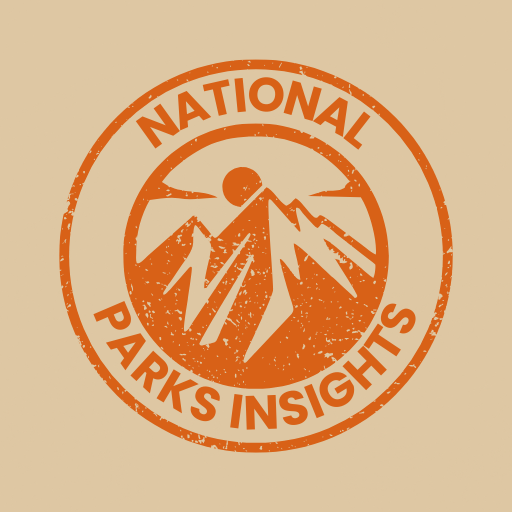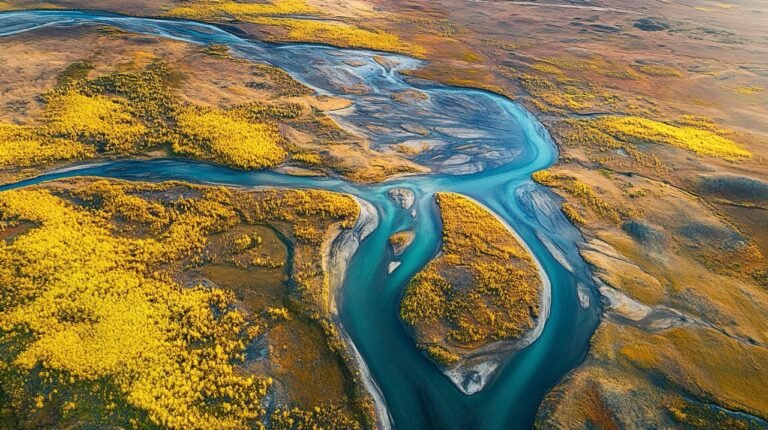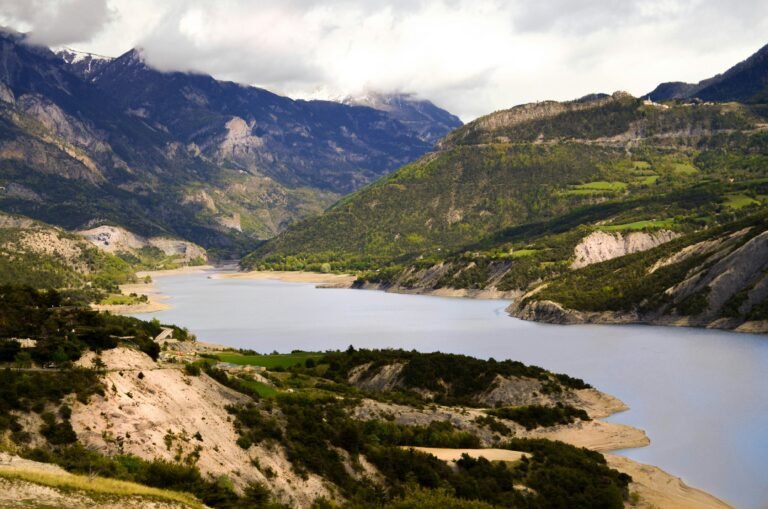Kobuk Valley Weather Overview
Arctic Location Overview
Hey there, adventurer! You’re about to dive into the stunning Kobuk Valley National Park, hanging out above the Arctic Circle. This gem’s got it all: chilling winters and summers that come in, soak up sun, then tiptoe away. The summers are all about mild vibes and sunny skies perfect for some outdoor magic. Winter? It’s the real-deal Arctic style, cold enough to freeze your eyelashes but also breathtaking in its own way. Check out the National Parked weather details if you don’t believe me!
| Season | Average Temperature (°F) | Daylight Hours |
|---|---|---|
| Summer (June-Aug) | 45-65 | 24 hours (June-July) |
| Winter (Dec-Feb) | -10 to -20 | 1 hour (December) |
Up in these parts, the winds dance around the clock, shaping places like the iconic Great Kobuk Sand Dunes. You’ve never seen anything quite like it.
Daylight Hours and Seasons
This park’s got more tricks up its sleeve with its crazy daylight swaps. Imagine chilling under a sky so bright it’s midnight but feels like noon. From early June to early July, the sun refuses to set in what’s called the Midnight Sun – endless daylight for exploring every nook and cranny.
Flip to winter, and you’re looking at one and a half hours of sunlight on the shortest day, December 21st. But don’t let that keep you indoors! Those dark skies are the stage for the world-famous Northern Lights brightening the winter nights.
| Date | Daylight Hours |
|---|---|
| June 21 (Summer Solstice) | 24 hours |
| December 21 (Winter Solstice) | 1.5 hours |
These sharp shifts in light make Kobuk Valley a once-in-a-lifetime spot where you can holler at the Midnight Sun or catch the Northern Lights performing their celestial show. It’s nothing short of magical.
If you’re itching for trip tips, swing by our Kobuk Valley visitor info and visiting guide for the lowdown on planning your epic visit.
Weather Conditions in Kobuk Valley
Getting a good grip on the weather in Kobuk Valley National Park is your ticket to a fun and safe adventure. Let’s break down the basics of summer heat, winter chill, and those tricky wind currents you’ll meet in the park.
Summer Temperatures
Summer’s a bit of a weather rollercoaster in Kobuk Valley. You could feel anywhere from the cozy mid-60s to a toasty mid-80s°F. On occasion, July might crank it up to around 85°F. But don’t let the sunshine fool you—the valley likes to surprise you with sporadic showers and gusts that might catch you off guard.
| Month | Average High (°F) | Average Low (°F) |
|---|---|---|
| June | 65 | 45 |
| July | 80 | 50 |
| August | 70 | 46 |
For tips on what to pack and do, see our visiting kobuk valley guide.
Winter Conditions
Winter’s no joke here. Think bone-chilling temps and real short days. January bottoms out around -8°F, but let’s be real; you might find yourself battling -50°F on a particularly frosty day (NPS.gov). Snow blankets the park, and the lack of sunlight brings its own set of hurdles.
| Month | Average High (°F) | Average Low (°F) |
|---|---|---|
| December | -5 | -20 |
| January | -8 | -25 |
| February | 0 | -18 |
Load up on layers, friends—polypropylene, fleece, wool, or even fur, are your best pals. Ditch the cotton—it holds onto moisture like a clingy ex.
Wind Patterns
Those breezes aren’t just a gentle rustle—wind speeds around 5 to 10 mph can flip to a brisk 20 to 30 mph during storms (National Park Service). You’ll want to armor up with wind-resistant gear, or you might be feeling arctic vibes even when it’s not that cold.
Seeing Kobuk Valley’s wonders like the great kobuk sand dunes is the stuff of dreams, but a little weather know-how goes a long way in making sure your trip is nothing short of fantastic. Whether it’s witnessing the wild kobuk valley caribou migration or catching the magical northern lights during those epic nights, being prepared is key. Fire up your wanderlust further with a peek at the conditions in gates of the arctic national park.
Preparation for Visiting
You’re heading to the wild frontiers of Kobuk Valley National Park; time to gear up right for its quirky climate. Check out these top tips to ensure you’re ready to roll.
Clothing Recommendations
Got to look the part and stay comfy, right? In Kobuk Valley, Mother Nature likes to throw surprises your way—think gusty winds and sometimes teeth-chattering cold, especially when winter sneaks in. Here’s how to stay cozy and on point:
- Layers Galore: Think of yourself as a walking onion. Stack on layers with snug materials like polypropylene, fleece, wool, or even fur if you’re feeling fancy. These layers will keep you warm and let you peel off the heat when things warm up unexpectedly (NPS – Kobuk Valley National Park).
- Sturdy Outerwear: Grab a jacket and pants with synthetic insulation. They’ll fight the chill even if it rains cats and dogs.
- Rain Armor: Make sure your rain gear can breathe; skip the sweat-fest. Vital for keeping dry while you’re on the move.
- No Gracias to Cotton: Cotton is like a sponge—soaks up all the wetness and keeps it. Say no and save yourself from getting chilled to the bone.
- Bootstrap: Grab waterproof, tough-soled boots. Navigating streams or mushy patches without these? Forget about it.
Here’s a quick dress code checklist:
- Base: Polypropylene or wooly thermals
- Mid-Layer: Fleece or wool tops
- Outer-Layer: Keep it waterproof and windproof
- Extras: Wool or synthetic hats, gloves, and scarves to top it all off
Survival Considerations
Kobuk’s no joke with its rugged weather and out-of-the-way spot. Here’s how to be a survival pro:
- Layer Up: Master the art of layer juggling for temp control and hypothermia defense.
- Pack Extra Warmth: Extra warm gear’s your buddy, even if it’s summer—temps can go peek-a-boo.
- Waterproof Wisdom: Keep dry with the right rain kits.
- Hypothermia Vigilance: Nix cotton. It’s a wet trap and hypothermia’s sidekick.
- Happy Feet: Choose footwear that’ll save your feet from slips and wet socks.
- Do It Yourself: Be your own hero with enough supplies, clothing, and tools to tackle the terrain.
Thinking of taking a deep dive into Kobuk Valley’s offerings or spending a longer chunk of time? Grab hold of deeper visiting Kobuk Valley tips and check the kobuk valley visitor information for the freshest updates. Prep smart and your time in Kobuk Valley Alaska will be one for the books!
Travel Considerations
Thinking about checking out Kobuk Valley National Park? There are a couple things to keep in mind that’ll make your trip awesome. Let’s chat about the endless summer days and those magical Northern Lights.
Long Daylight Hours
In summer, Kobuk Valley goes full-on party mode with the Midnight Sun. Between June 3rd and July 9th, it’s sunlight 24/7. Yep, no bedtime for the sun! This gives you tons of time to roam around and soak in the vibe.
| Period | Daylight Hours |
|---|---|
| June 3rd – July 9th | 24 hours |
| December 21st | 1.5 hours |
Now, while it’s fun to have sunshine around the clock, trying to sleep in broad daylight can be tricky. So, pack some eye masks unless you’re a sunshine snoozer! With the extra daylight, you can wander through the mind-blowing Great Kobuk Sand Dunes or follow the incredible caribou migration any time you fancy.
Northern Lights Viewing
For those chasing the Aurora Borealis, Kobuk Valley is where you wanna be. It’s particularly awesome during the long winter nights. The best show-stopping times are when solar magic’s brewing up in the sky, usually in the darker months.
To catch this light show, pop over from late September to early April. Sure, you could try during summer, but all that daylight makes the sights a bit snooze-worthy. On December 21st, the sun only peeks out for about 1.5 hours, leaving plenty of nighttime for aurora action.
If you’re thinking of timing it perfectly, keep an eye on the latest weather and aurora forecasts. Show up when the sky’s at its brightest dance. Peek at our Kobuk Valley visitor information for more scoop on catching those northern flickers.
Kobuk Valley dazzles with sunny days and night skies lined with the Aurora’s glow. For more savvy tips to revamp your journey, dive into our guides on visiting Kobuk Valley and checking the kobuk valley weather.
Recent Weather Updates
Keeping in the loop with the weather before heading out to Kobuk Valley National Park is super handy. Get clued up on what’s happening in the skies and get your gear just right for the trip.
Last Text Update
Picture this: You’re all set and packed for Kobuk Valley National Park, and the weather decides to throw you a curveball. The latest scoop on the park’s weather was dished out on August 9, 2024 (NPS.gov). For the freshest updates, don’t forget to drop by the park’s website or check out Kobuk Valley visitor information before you head out the door. Surprises should be for birthdays, not weather!
Seasonal Weather Summary
Winter 2021/2022:
- Precipitation: It rained and snowed like there’s no tomorrow last winter in Kotzebue! December was particularly soggy, setting a record with 2.52 inches of precipitation—way more than what the skies usually serve up. All winter long, the skies dumped a total of 3.62 inches, which is a soaking above the norm.
- Temperatures: It was chilly enough to freeze your socks off. January had everyone reaching for their hot cocoa as temperatures dropped to about 11°F below your standard January, and February wasn’t too cozy either, being a solid 8.2°F colder than average (National Park Service).
Spring 2022:
- Temperatures: Spring finally got around to warming things up… sorta. After that brisk winter, June had a bit of a nip to it, sitting 1.8°F cooler than what folks usually expect, and July turned out to be the chilliest since 2010, averaging 51.9°F (National Park Service).
| Season | Temperature Variance (°F) |
|---|---|
| January 2022 | -11 |
| February 2022 | -8.2 |
| June 2022 | -1.8 |
| July 2022 | -3.4 |
If you’re planning on tackling the Great Kobuk Sand Dunes, or want to catch a glimpse of the Kobuk Valley caribou migration, knowing what Mother Nature’s up to only sweetens the adventure.
Impact of Climate Change
Climate change does a number on Kobuk Valley weather, messing with the environment and wildlife roaming around the park.
Rising Ocean Temperatures
Turns out, hotter oceans aren’t just a beach problem. These warmer waters get stingy with the nutrients that hang out deep down, the kind that keep phytoplankton—tiny but mighty ocean food makers—happy and productive. This domino effect has ripple waves stretching across food chains (Defenders of Wildlife).
Here’s the lowdown of what rising ocean temps do:
| What happens | What it means |
|---|---|
| Nutrient movement below | Slows down |
| Tiny ocean food makers | Struggle |
| Food chains | Get tangled |
Effect on Wildlife
Life isn’t exactly a walk in the park for animals in Kobuk Valley National Park because of climate change. Warmer weather tells critters to pack their bags for new hangouts, making everyone jostle for space and stuff to eat. This shuffle sometimes rolls out the welcome mat for new species that bring not-so-fun diseases along with them.
Another headache is the timing mix-up with nature’s calendar—phenological mismatch, if you’re into big words. When stuff like snow melt or chow time happens off schedule, survival mode kicks in for animals (Defenders of Wildlife). Those that depend on nature’s clock for things like having babies or migrating can have a rough go.
And don’t even get us started on birds! Our fine feathered friends are heading north more than they used to, often landing in spots without the usual buffet ready (Defenders of Wildlife).
| Problem | Shake-up |
|---|---|
| Habitat hopping | More rivals, new species |
| Nature’s off-clock | Messed-up life cycles |
| Bird travel plans | Northbound, missing meals |
Want to catch more about Kobuk Valley critters, like the epic caribou migration? Make your way to the wildlife in Kobuk Valley page.
Getting a handle on these shake-ups is vital if you plan on visiting Kobuk Valley. Being informed helps keep the park’s magic alive for all who wander through its beauty.
Weather Patterns in Nearby Parks
Gettin’ a handle on the weather in spots around Kobuk Valley National Park is like your backstage pass to a killer outdoor trip. Let’s break it down with a look at how the skies behave over at Gates of the Arctic National Park and Yosemite National Park.
Gates of the Arctic NP
First off, Gates of the Arctic National Park sits way up north in Alaska and is the wild card of weather, makin’ even polar bears pack an extra coat. Winters are brutal, summers aren’t too bad, and overall, it doesn’t rain much. Out west of the park, you’ll find the sky dumps about 12-18 inches a year, and it’s a bit less on the eastside with about 8-12 inches (National Park Service).
| Season | Temperature (°F) | Precipitation (in) |
|---|---|---|
| Winter (Nov-Mar) | -67 (min) to 33 (max) | 8-18 (annual) |
| Summer (Jun-Aug) | Avg. High of 60 | Not much |
Think snow’s done once spring hits? Nah, it keeps on comin’ with the central Brooks Range area getting snow almost all year long, stackin’ up about 60-80 inches. And surprise! Snowflakes have crashed every month of the year here. If you’re chasin’ the Northern Lights, the magic happens from November to March.
Get all the juicy details on how to prep for this adventure at our Gates of the Arctic National Park page.
Yosemite National Park Study
Now, switchin’ channels to the golden state, Yosemite National Park kicks it in California’s Sierra Nevada, showin’ off a whole different climate game. This mixed bag depends on how high up you are and what season you drop by.
Fun fact: butterflies have been showin’ up like party crashers way more these past few decades in the High Sierra zone of Yosemite. Meanwhile, poor little high-altitude specialists are packin’ their bags and skedaddlin’. Temperature swings, rainstorms, and windy days all mess with the big annual butterfly count (National Park Service).
By catchin’ on to these weather scripts, your Kobuk Valley journey can become an epic one as you figure out how to dress and what to expect. For the inside scoop on planning your trip, head to our kobuk valley alaska and kobuk valley visitor information pages.




